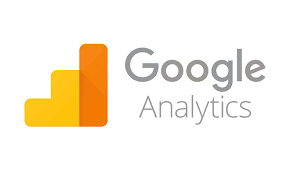What is Google Analytics 4? What does it mean for businesses? and how does it compare to the traditional version?
Our guide will make it easy for you to decide when is the right time for you to make the switch.
Google’s Analytics is used by millions of businesses worldwide to track user interaction across web domains and mobile apps.
The transition to GA4 is most likely the biggest transformation that the tool has ever gone through and it is set to rock the digital marketing world and the way that we track web data!
Most businesses know this platform as the tool that helps them track the amount of web traffic they get, monitor important marketing channels, and to measure their main KPIs. And now with Google Analytics 4, Google is offering a new version that uses Artificial Intelligence, making it very different from the traditional “universal” Analytics.
GA 4 comes with many new features that will make it very different from the old version. One of the biggest differences is the new data modeling feature that uses AI to fill in gaps in data where traditional Analytics may be blocked by cookie-consent rules, blocked JavaScript and a focus on privacy. Years ago, we had a lot more data available to us in GA but as privacy laws have become stricter in many countries it has become more difficult to collect a lot of the data.
Additionally the user-interface for the new default Google Analytics is very different. So here’s a walkthrough for some of the most important differences.
What is Google Analytics 4?
Google self-describes the purpose of the new Google Analytics as a next generation approach to “privacy-first” tracking, x-channel measurement, and AI based predictive data all at once. By applying Google’s advanced machine learning models, the new Analytics can fill out data for website traffic and user behavior without relying on having “hits” come from every page. I have said for years that ‘hits are how idiots measure success’ and this new change pretty much backs up that theory. We can no longer rely on just hits to give us the data we need as more and more of our ‘hits’ are being blocked by privacy settings.
All this means that its main goal is to shift the way data is shown to focus on users – mainly the user journey from first visit to final conversion.
Plus GA4 is all about “events.” These events are the main way that data is presented in the new Google Analytics, it will also be a great time to revisit your Google Analytics roadmap and reassess what kind of events it’s important for your website to measure.
Finally, the machine-learning processing in this new Analytics means that it can fill in gaps where businesses aren’t able to understand their complete customer base because of users that opt out of cookie usage and data collection. Internet users and even browser companies are becoming increasingly stingy about allowing Analytics to track sessions or return users by using cookies – for example, a lot of websites are starting to use visitor consent to define their Analytics tracking.
The need for something like Google Analytics 4 largely comes from new privacy protection laws (like the GDPR and CCPA) and the diminished stability of traditional analytics. A lot of businesses using the traditional Universal Google Analytics could often run into issues with inaccurate or missing data due to cookie consent options required by these laws.
If you need help deciding on the right time and way to switch to GA4, please email us on [email protected] to book a consultation.










